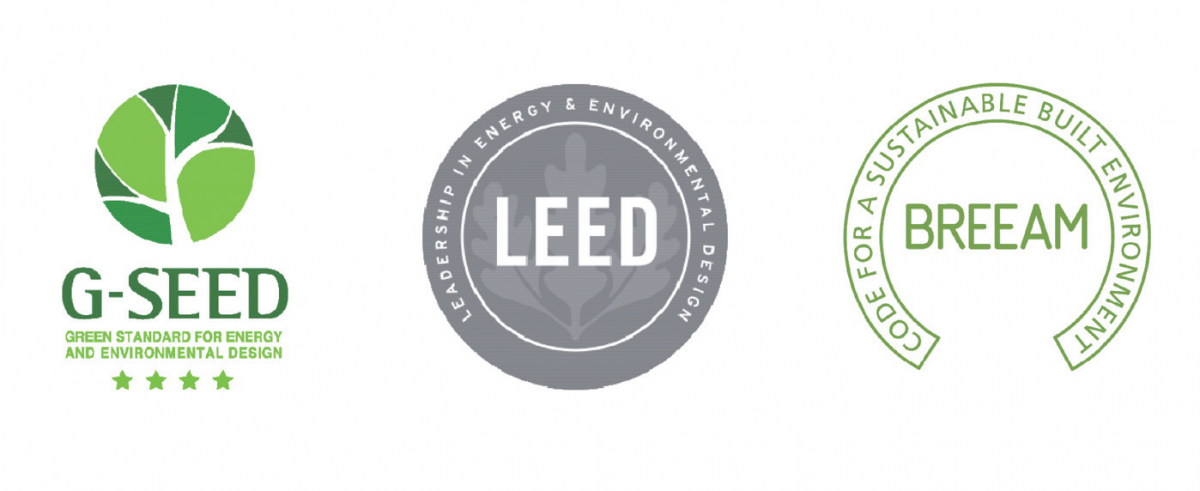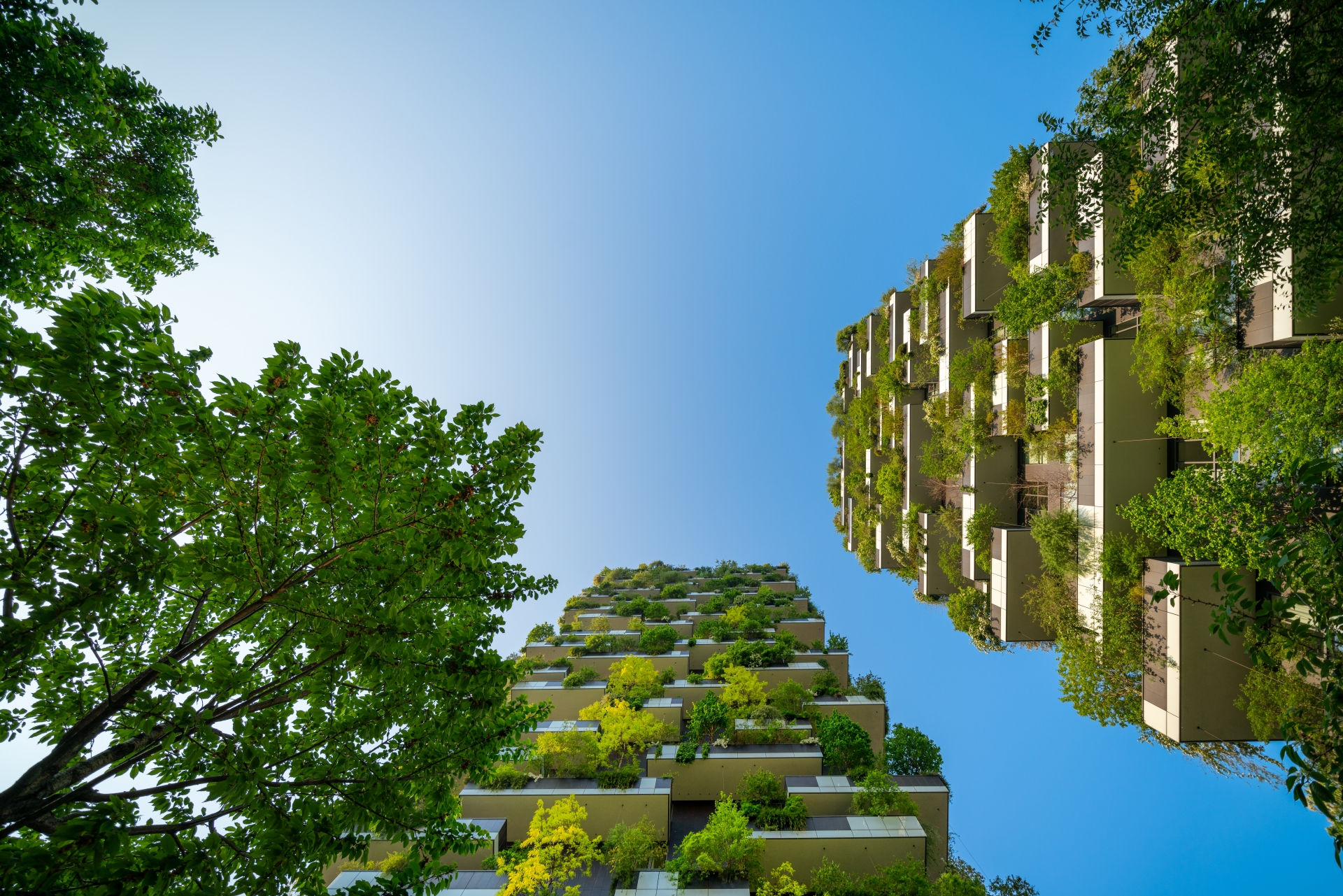ⓒPaolo Rosselli
While we all share the same planet, only a few of us have expressed concerns for the earth’s well-being and about the amount of damage wreaked upon nature. Making improvements to the convenience of our quality of life has now reached a state of no recovery, and we are now aware of the need to unite to tackle this shared challenge of our age described as climate change, or climate crisis. We must review what we have long taken for granted and ask ourselves: ‘does this threaten the environment?’ Correspondingly, what can we ask of architecture and what will improve our quality of life and human dignity in the midst of our ongoing climate emergency? What should we do? By reviewing a building’s life cycle from production, maintenance, and demolition, in the context of climate crisis, we will examine pertinent responses in this issue of SPACE.
STEP 2: During Operation and Maintenance
Question 1: How Much Carbon is Emitted in a Comfortable Thermal Environment?
Question 2: Is a Dam That Is in a Green Building Certification System Working Properly?
Question 3: Can Planting in the Built Environment Become a Lung for the City?

Green Building Certification Systems
(from left to right) G-SEED (Korea, government-led), LEED (US, private-led), BREEAM (UK, private-led)
Eastablishing the Certification System and an Eco-friendly Architecture Industry
According to ‘The 2020 Global Status Report for Buildings and Construction’ by the Global Alliance for Buildings and Construction (GlobalABC), building-related emissions account for 38% of the total carbon emissions, of which 28% are emitted during the operation stage and 10% are emitted during the construction stage. Countries around the world are implementing various policies to manage carbon emissions in the building sector, and the certification system is at the centre of this contention. There are two main types of certification systems that manage carbon emissions of buildings internationally: the system that comprehensively evaluates various elements of a city and its architecture, which we call Eco-friendly Certification, and the Building Energy Performance Evaluation System that focuses on energy. The Korean government is also implementing Green Standard for Energy and Environmental Design (G-SEED), which covers the environmental impact of a building’s entire life cycle, and the Building Energy Efficiency Rating System, which evaluates energy efficiency at the operation and maintenance stages. Currently, the two systems seem to have completely settled in Korea. In addition to the public building obligations, the local government is applying stricter standards than ever before, making it mandatory for the private sector to acquire them. The certification system has also led to successful changes in others. It is the birth of a new industry known as eco-friendly architecture, and which will result in new job creation. If so, is the Green Building Certification System working properly?
The Attitudes and Perceptions of the Designer, Client, and Owner
When I first organised the eco-friendly design team at Heerim Architects & Planners Co., Ltd., where I am working, the in-house design team’s perception of an ‘eco-friendly architecture’ was very low. Therefore, we insisted on the necessity of integrated design and tried to create a consensus by contemplating together from the design competition stage. Now, recognition of the design competition team has come to reach a considerable level, and the certification system has become natural for the practical design team. Nevertheless, why is eco-friendly architecture still not considered a major trend? When looking at the design philosophy of famous overseas designers or firms, most of them value ‘sustainable design’. However, the atmosphere in Korea is quite different. Eco-friendly architecture is only a superficial justification, and the higher value and integrity remains in the realm of design aesthetics.
For building owners and clients, the work is fast-paced so as to fulfill the mandatory standards set by the nation or local governments, except for in some cases it is to enhance their corporate image or to attract tenants. As a result, they take the easy route by concentrating on the agendas that make it easy to achieve points in the certification system, instead of investigating the impact on the global environment. For private clients, the focus is on the economic benefits that can be returned from investment. In Korea, electricity prices are low, so the effect of reducing energy costs is not considerable. Furthermore, in the case of rental buildings, the economic benefits from the energy reduction are taken by the tenant, not the building owner. It means that it is not very attractive for investors.
Inconsistencies in the Architectural Design Process
G-SEED or a building energy efficiency rating is divided into pre-certification at the design stage and self-certification at the construction stage. However, the evaluation standpoint at both stages is the same, and pre-certification must be obtained before identification. It is at this point that inconsistencies and even absurdities arise. Since pre-certification must be completed at the design stage, it is carried out at the beginning of the detailed design immediately after the basic design process, in parallel with the licensing procedure. However, the books required for pre-certification contain a range of content that can only be known when the detailed design is completed or that can be determined at the construction stage. Therefore, irrationalities remain just for the sake of certification along with unsuitable content filling in the books. BREEAM in the UK and LEED in the US, which were referenced in the development of G-SEED, proceed as a single process on a continuous flow of design and construction. They also have a primary evaluation at a design stage similar to our pre-certification, but they are optional rather than obligatory, and evaluation items are also design-related. In addition, the design and eco-friendly consultation are separated, so the justification is made after the design process. No designers will admit the green building certification is a variable in design.
The Inefficiency and Rigidity of the Certification Evaluation Method
There are also inefficiencies in the certification evaluation method. For example, in order to obtain the material-related score of the G-SEED, it is necessary to calculate the area of the floor, wall, and ceiling of the room to which the material is applied, and to prove whether the area is more than a certain percentage of the total area. In the building energy efficiency rating, the area such as windows, walls, and floors must be calculated and entered one by one. But looking at overseas cases, there are other efficient measures. LEED evaluates certification as the ratio of eco-friendly material construction costs to the total construction cost. The energy also uses 3D modeling-based simulation. There is no need to calculate the window or wall area individually. Wouldn't it be possible to develop a programme linked to three-dimensional modeling based on the total energy consumption system (ECO2), for building energy efficiency? In reality it is impossible. This is because, by design, the algorithm of ECO2 is not disclosed. We are still simply repeating time consuming tasks.
For a building energy efficiency rating, even if a new system for energy saving is designed, it is of no use if it is not compatible with ECO2. The willingness to reflect new technologies in energy reduction is bound to weaken. In addition, in the case of new and renewable energy, the systems recognised by various systems such as Green Certification, Energy Efficiency Rating, and Renewable Energy Portfolio Standard, are all very different. An eco-friendly consultant should try to identify the discrepancies between them and come up with the most efficient way. Therefore, it is difficult for designers to grasp the content as a whole, and they cannot but be dissatisfied with the certification system, which creates complex and consuming tasks. Even without being guaranteed a fair price.
Evaluation of Certified Buildings, Reliability, and Sharing of Experiences
Recently, I read an article that the apartment houses that received incentives for G-SEED failed in their assessment of building energy. Such controversy occurred in public buildings, too. The inconveniences experienced by the residents was under scrutiny. Of course, such an evaluation will need to be clearly analysed by an expert, but we do not presently have such information. Although there will be many experiences and lessons to be learned from the numerous public buildings that have been certified, the accumulation of those experiences and know-how remains at the individual level not the national level. The UBA Building in Dessau, Germany, received international attention when it was completed in 2005. It was an example of a successful combination of eco-friendly strategies, designs, and technologies. The results of more than three years of research, including simulations in the planning and construction phases, and monitoring of energy use for more than one year after moving in, were disclosed, but the assessment of energy was lower than predicted during the design process. They published promotional materials and provided building tour programmes, showing their initiatives to a large number of people internationally.
The Necessity of Rational Reform and an Approach that Strikes the Heart
Unlike other countries, in Korea the concept of eco-friendly architecture was initiated by government, and architects hardly participated in the policy establishment process. As such, the certification system operates in parallel with the building process. Although integrated design is based on the collaboration of experts from various fields, it is ultimately up to the architect to integrate it. It is also necessary to discuss active measures to induce the participation of the private sector. Although the floor area ratio incentive is currently implemented to some extent, there is controversy over whether increasing the floor area ratio fits the direction pursued by eco-friendly architecture. Buildings emit nearly three times more greenhouse gases during use than during the construction process. This means that the role of those who use it is more important than the person who builds it. That being said, you have to move a person’s heart. If you don’t see and feel what’s eco-friendly in eco-friendly buildings, you won’t be able to bring about a change in behaviour. I hope you pay more attention to points where you react in an emotional way, such as a small garden in the city office, a green indoor seating area, a rich green balcony of apartments, and beautiful vegetation covering the walls of the building. Now, we also want to have the time, technology, and economic leeway to cultivate where we live more humbly as a part of nature. Eco-friendly architecture is a matter of attitude. (written by Lee Ahyoung / edited by Bang Yukyung)





